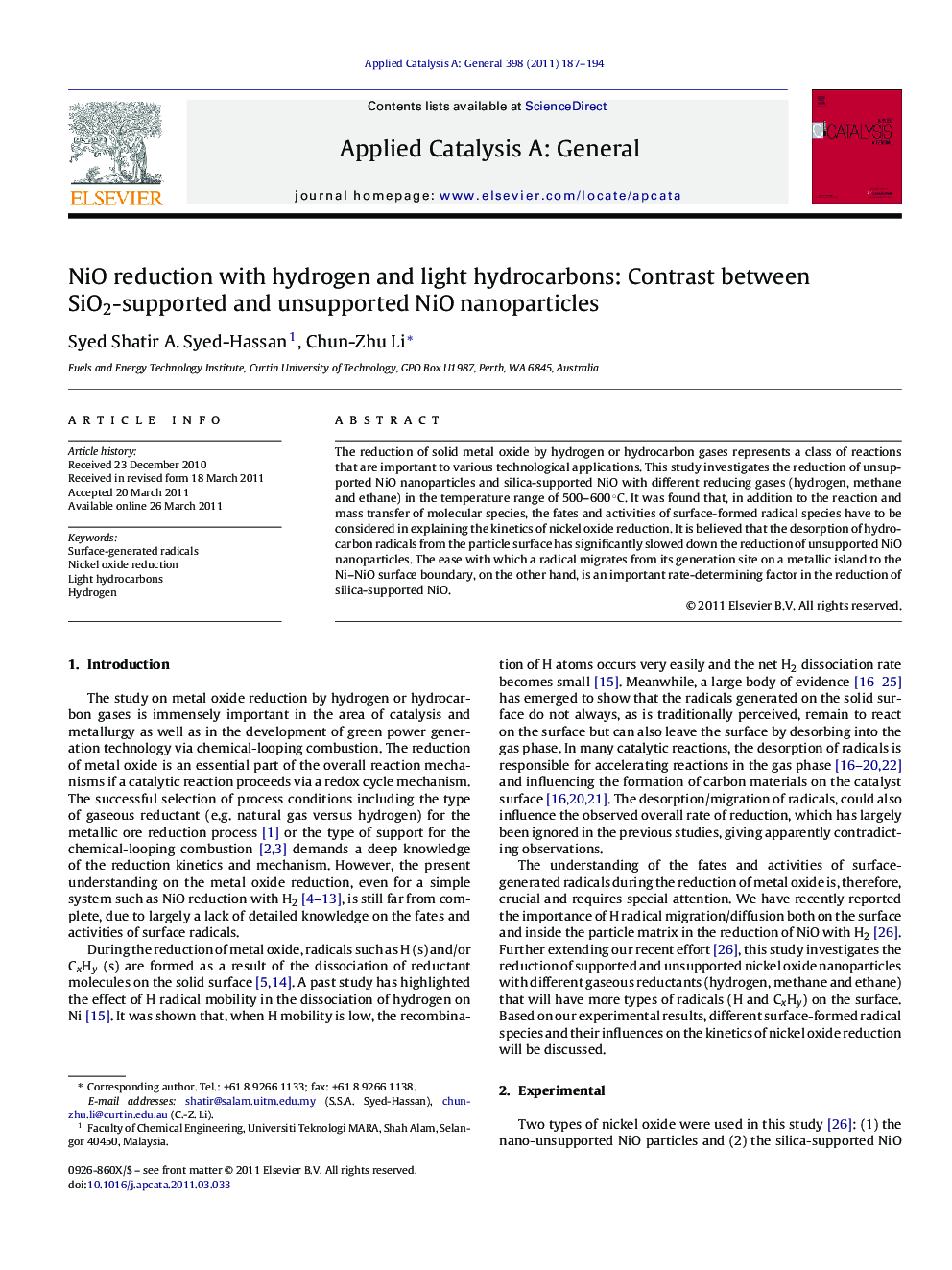| Article ID | Journal | Published Year | Pages | File Type |
|---|---|---|---|---|
| 41610 | Applied Catalysis A: General | 2011 | 8 Pages |
The reduction of solid metal oxide by hydrogen or hydrocarbon gases represents a class of reactions that are important to various technological applications. This study investigates the reduction of unsupported NiO nanoparticles and silica-supported NiO with different reducing gases (hydrogen, methane and ethane) in the temperature range of 500–600 °C. It was found that, in addition to the reaction and mass transfer of molecular species, the fates and activities of surface-formed radical species have to be considered in explaining the kinetics of nickel oxide reduction. It is believed that the desorption of hydrocarbon radicals from the particle surface has significantly slowed down the reduction of unsupported NiO nanoparticles. The ease with which a radical migrates from its generation site on a metallic island to the Ni–NiO surface boundary, on the other hand, is an important rate-determining factor in the reduction of silica-supported NiO.
Graphical abstractFigure optionsDownload full-size imageDownload high-quality image (111 K)Download as PowerPoint slideHighlights► Reduction of NiO nanoparticles differs from that of SiO2-supported NiO. ► Kinetics of NiO reduction depends on the fates of radicals formed on the surface. ► Desorption of radicals slows down the reduction of unsupported NiO nanoparticles.
